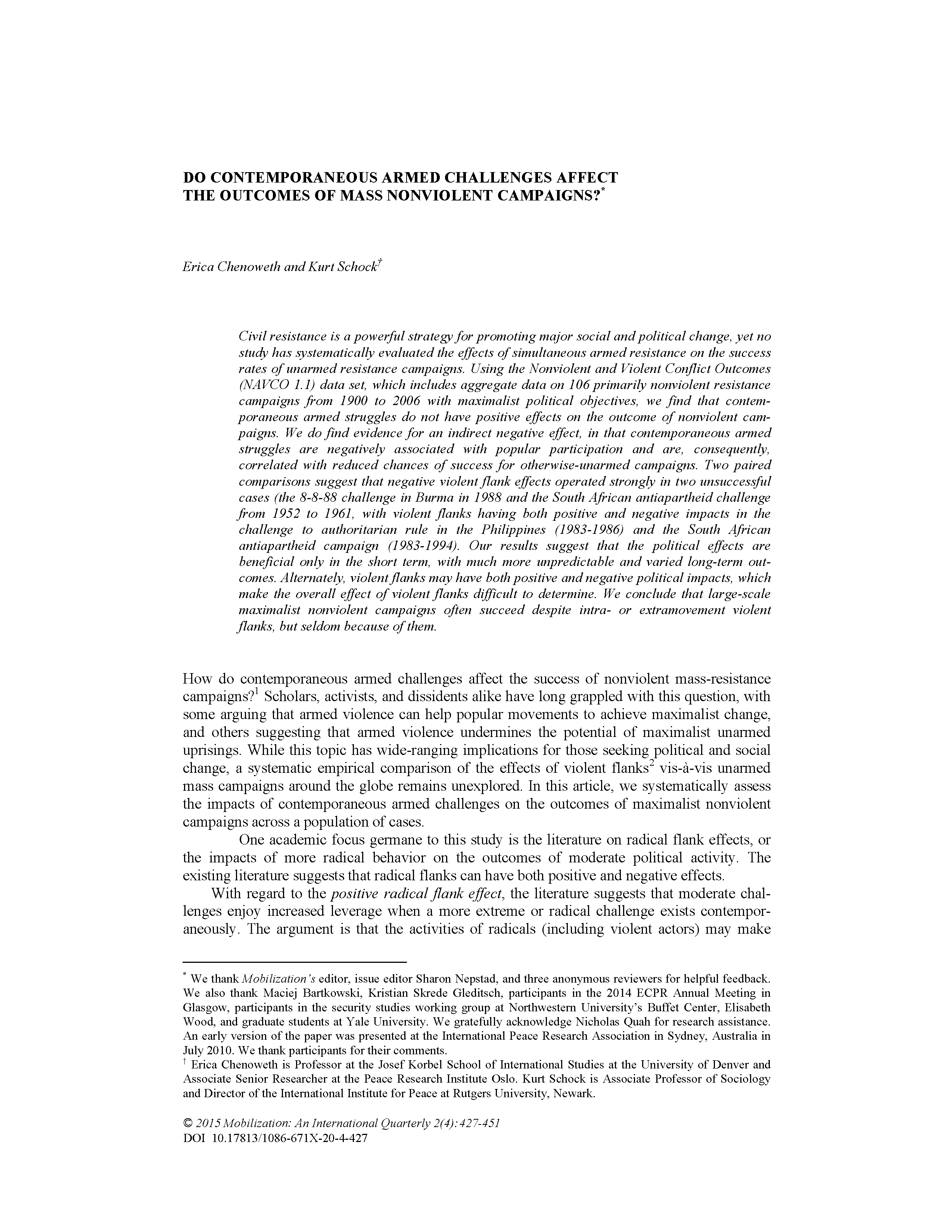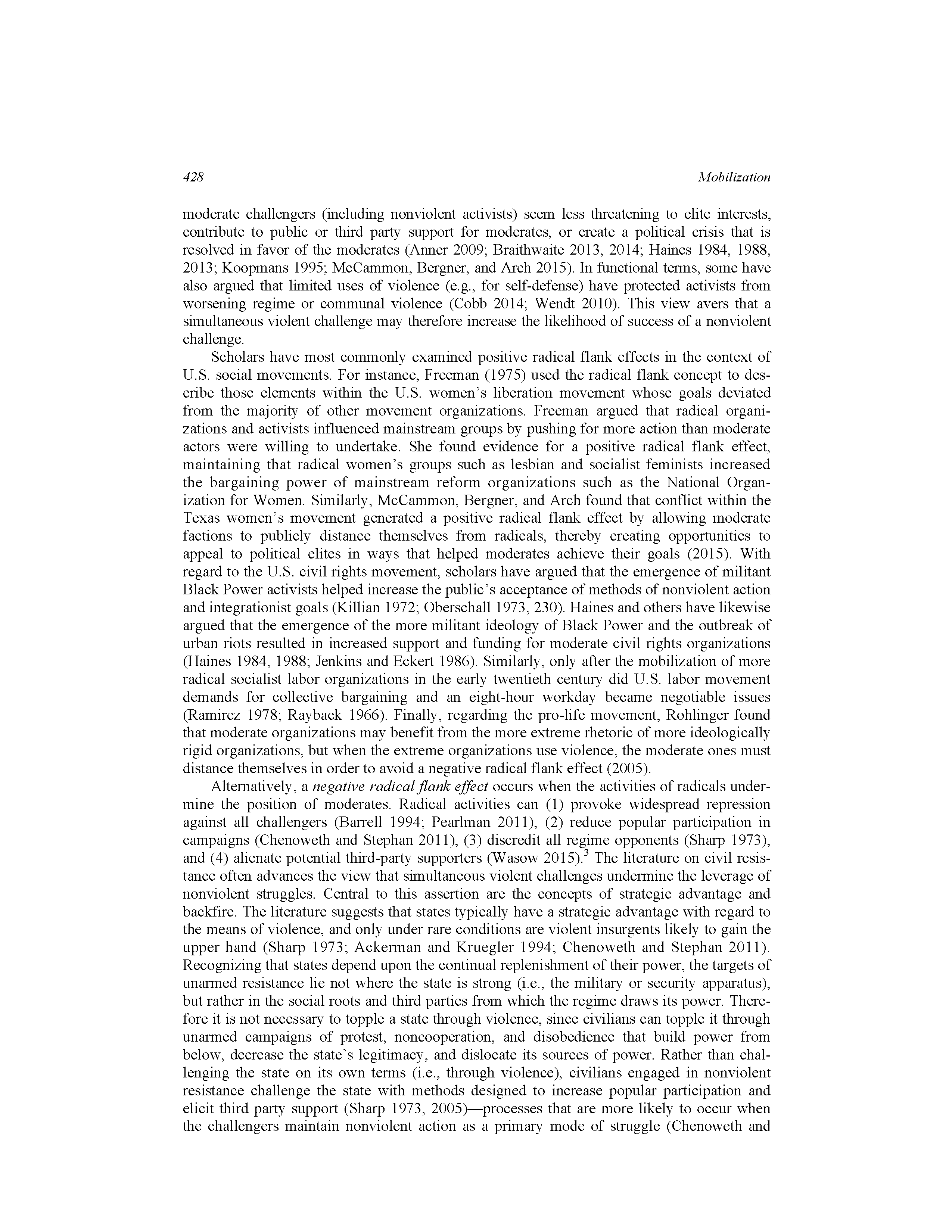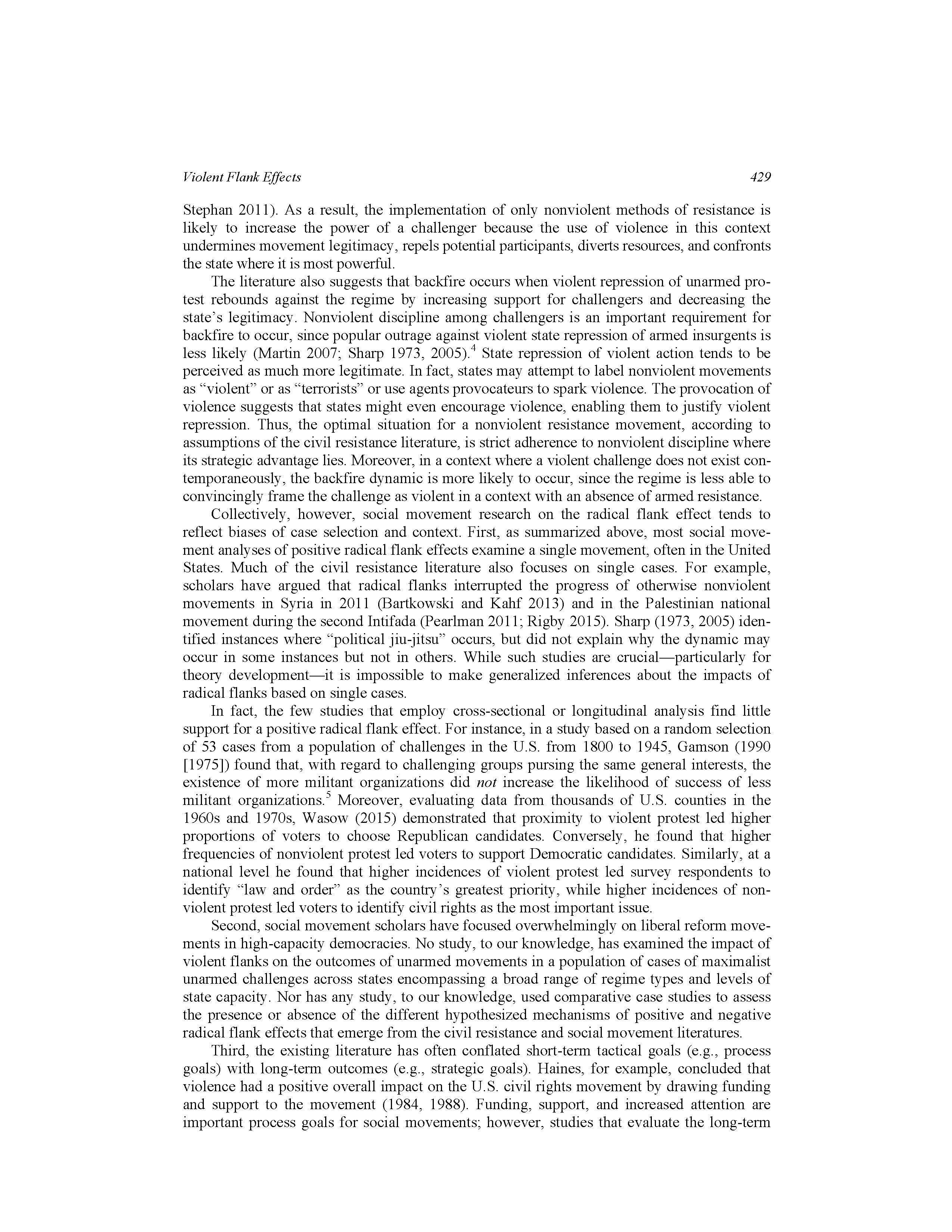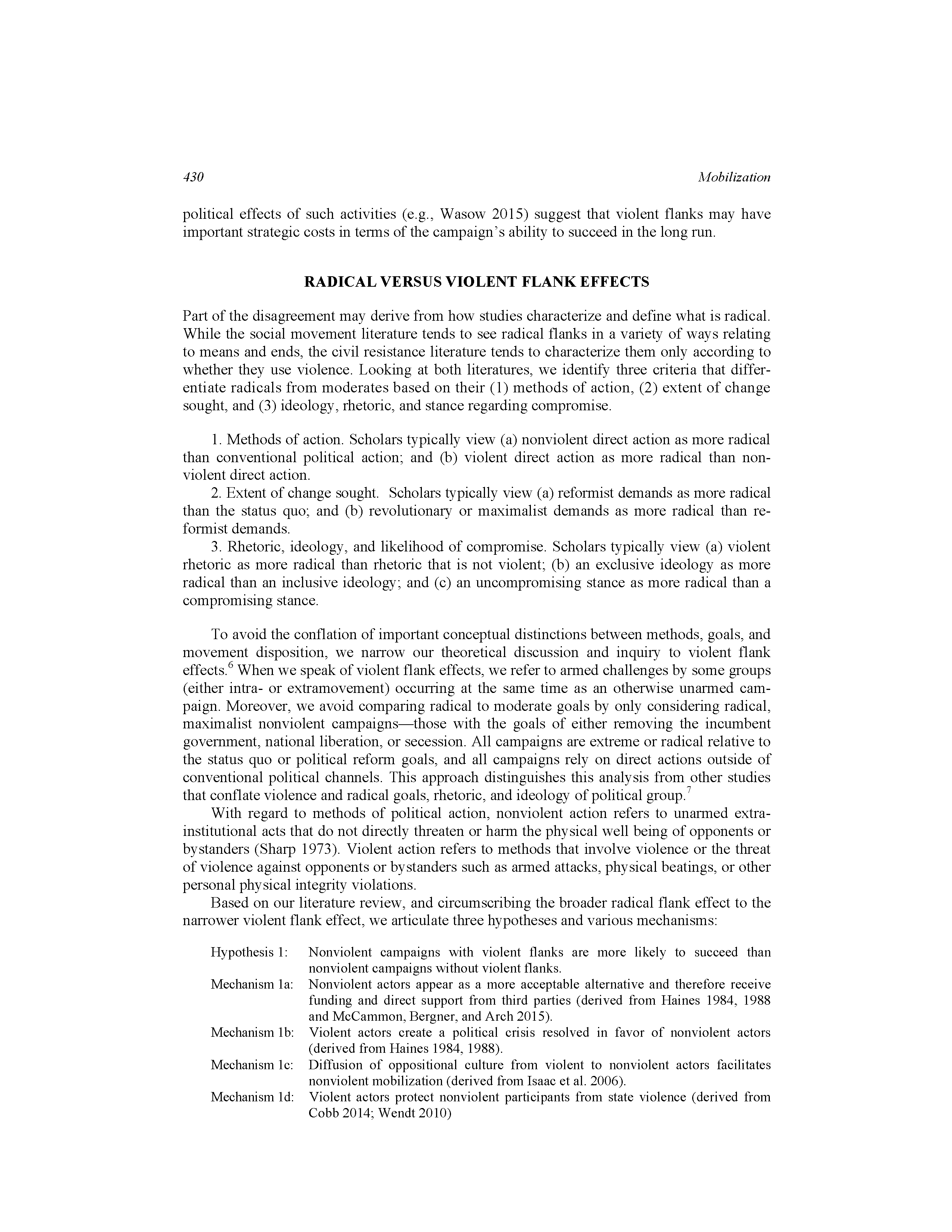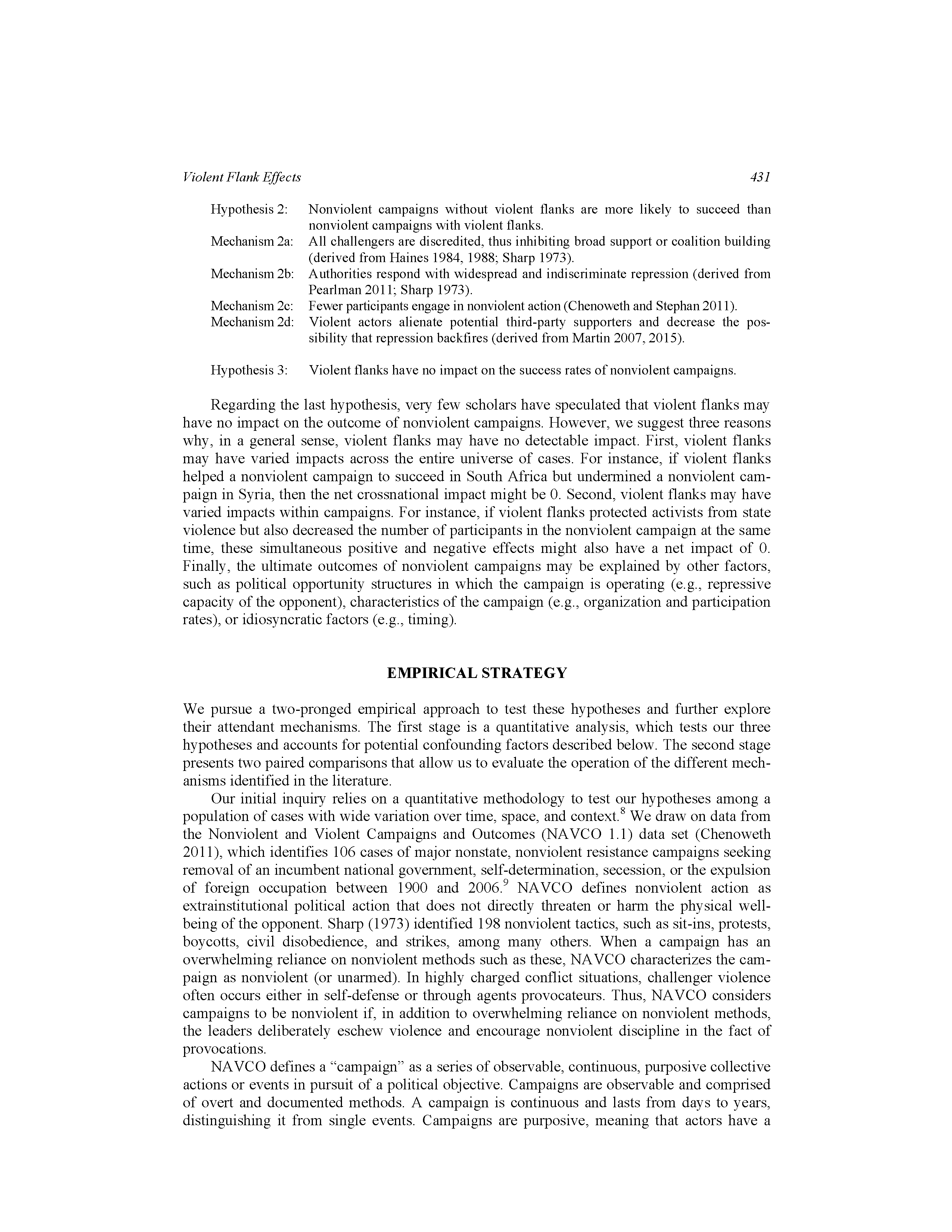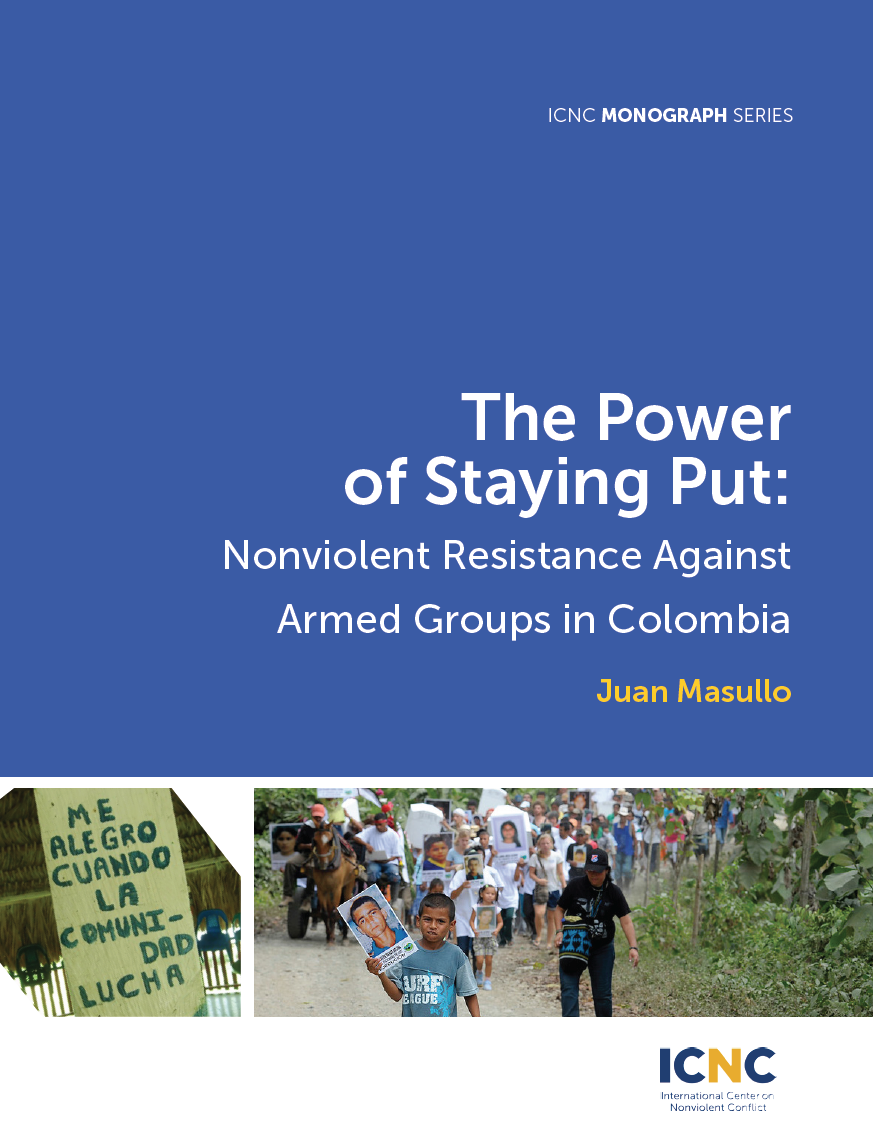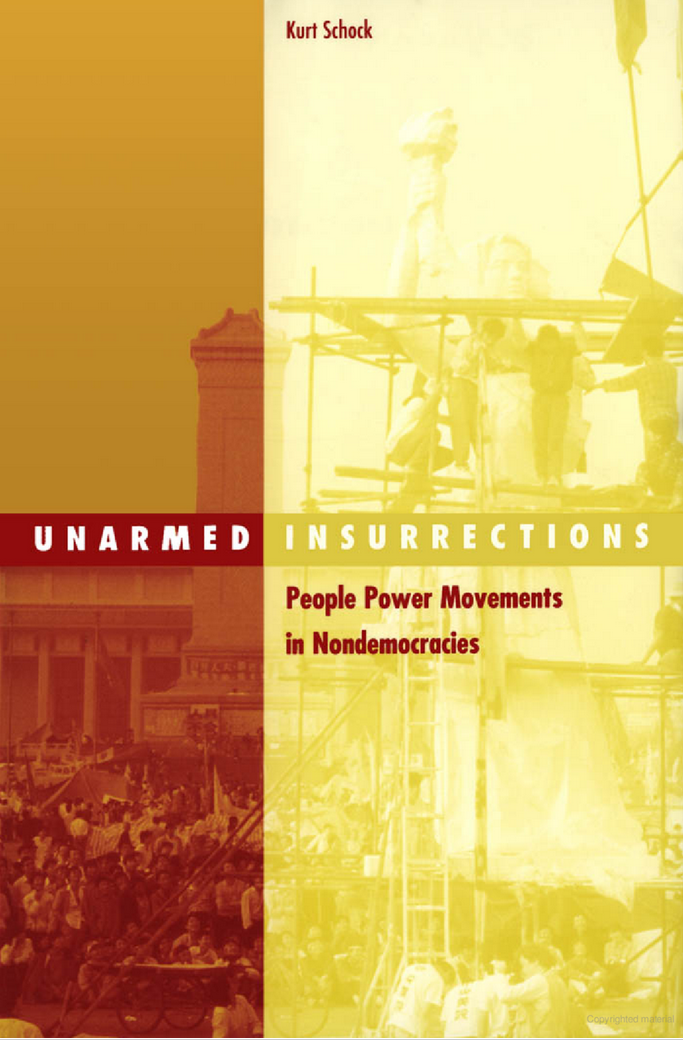Do Contemporaneous Armed Challenges Affect the Outcomes of Mass Nonviolent Campaigns?
Civil resistance is a powerful strategy for promoting major social and political change, yet no study has systematically evaluated the effects of simultaneous armed resistance on the success rates of unarmed resistance campaigns. Using the Nonviolent and Violent Conflict Outcomes (NAVCO 1.1) data set, which includes aggregate data on 106 primarily nonviolent resistance campaigns from 1900 to 2006 with maximalist political objectives, we find that contemporaneous armed struggles do not have positive effects on the outcome of nonviolent campaigns.
We do find evidence for an indirect negative effect, in that contemporaneous armed struggles are negatively associated with popular participation and are, consequently, correlated with reduced chances of success for otherwise-unarmed campaigns. Our results suggest that the political effects are beneficial only in the short term, with much more unpredictable and varied long-term outcomes.
Can also be accessed on Erica Chenoweth’s personal website
Mobilization: An International Quarterly, December 2015

